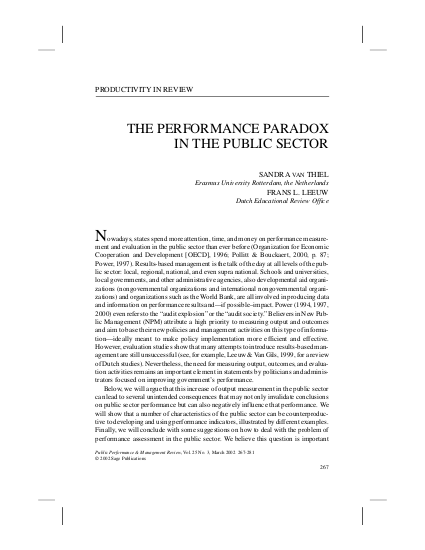
Nowadays, states spend more attention, time, and money on performance measurement and evaluation in the public sector than ever before (Organization for Economic Cooperation and Development [OECD], 1996; Pollitt & Bouckaert, 2000, p. 87; Power, 1997). Results-based management is the talk of the day at all levels of the public sector: local, regional, national, and even supra national. Schools and universities, local governments, and other administrative agencies, also developmental aid organizations (nongovernmental organizations and international nongovernmental organizations) and organizations such as theWorld Bank, are all involved in producing data and information on performance results and—if possible–impact. Power (1994, 1997, 2000) even refers to the “audit explosion” or the “audit society.” Believers in NewPublic Management (NPM) attribute a high priority to measuring output and outcomes and aim to base their new policies and management activities on this type of information— ideally meant to make policy implementation more efficient and effective. However, evaluation studies show that many attempts to introduce results-based management are still unsuccessful (see, for example, Leeuw&Van Gils, 1999, for a review of Dutch studies). Nevertheless, the need for measuring output, outcomes, and evaluation activities remains an important element in statements by politicians and administrators focused on improving government’s performance.
Below, we will argue that this increase of output measurement in the public sector can lead to several unintended consequences that may not only invalidate conclusions on public sector performance but can also negatively influence that performance.We will show that a number of characteristics of the public sector can be counterproductive to developing and using performance indicators, illustrated by different examples. Finally, we will conclude with some suggestions on how to deal with the problem of performance assessment in the public sector. We believe this question is important because—although not without problems—performance measurement indeed can be of value to the public sector.